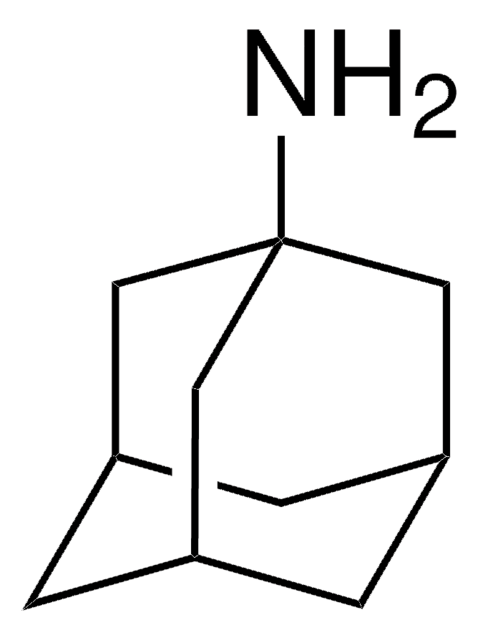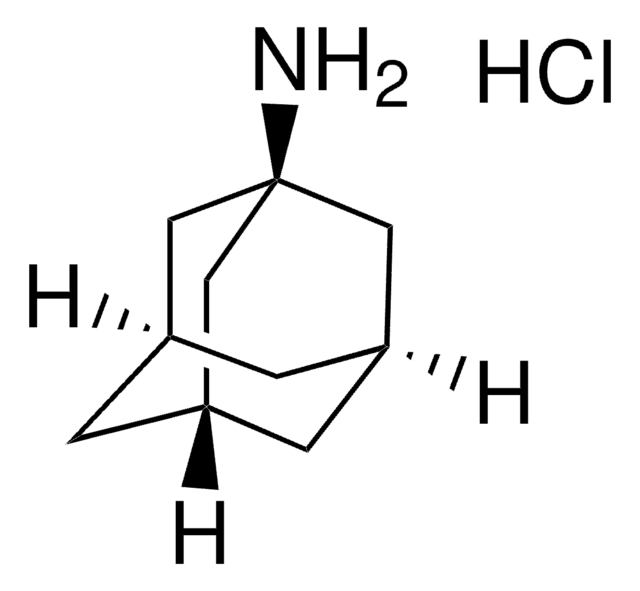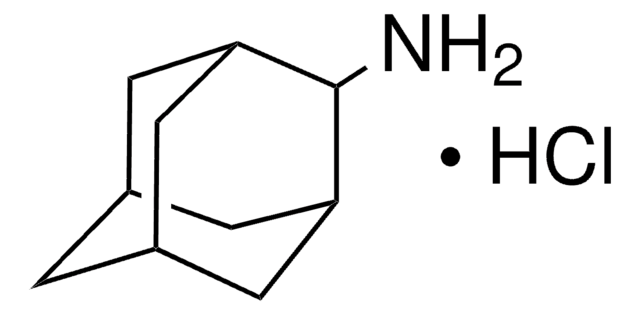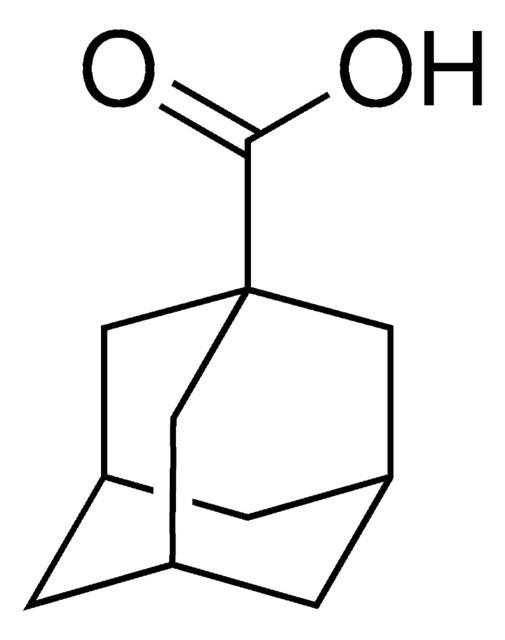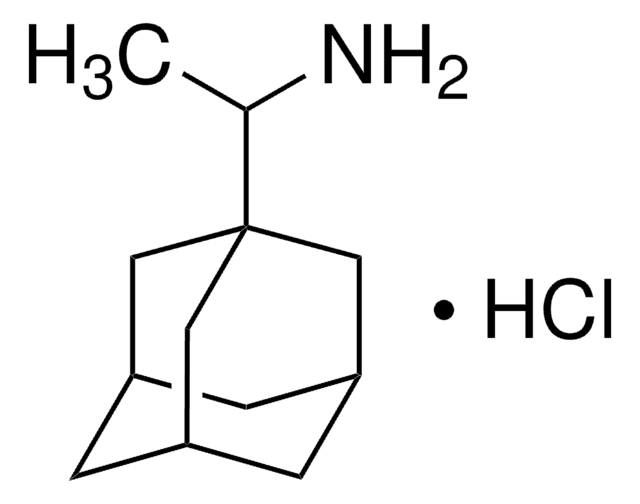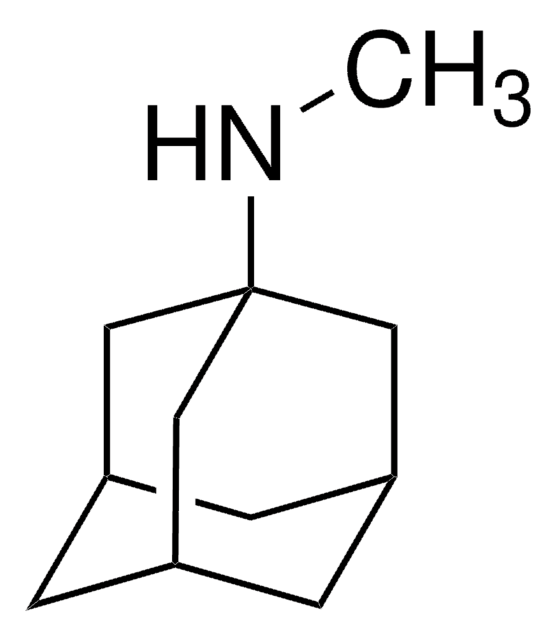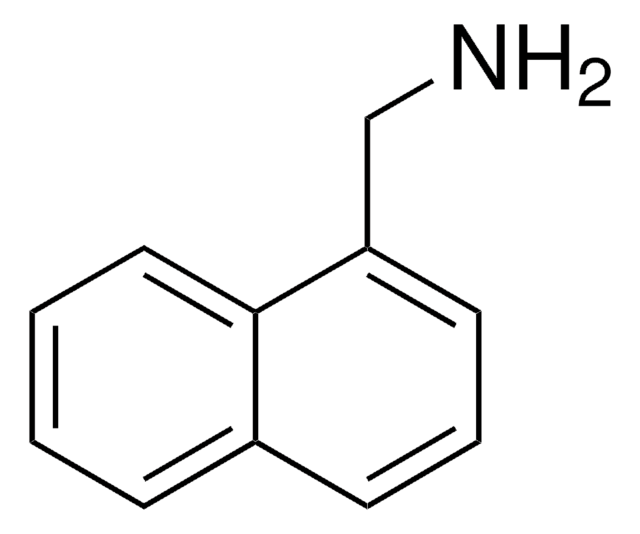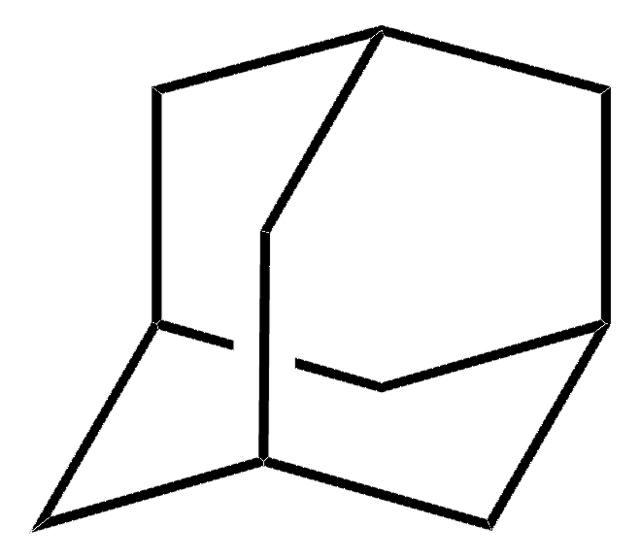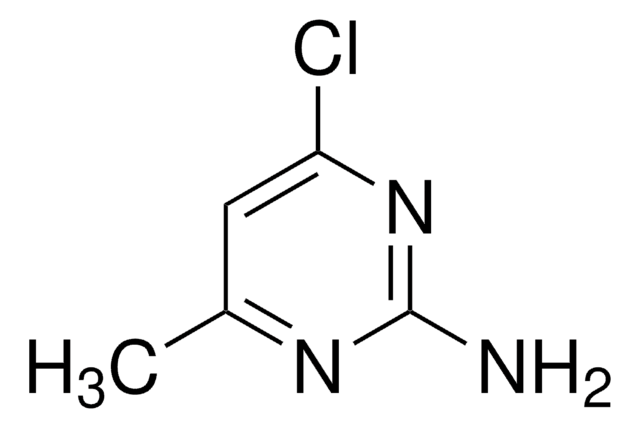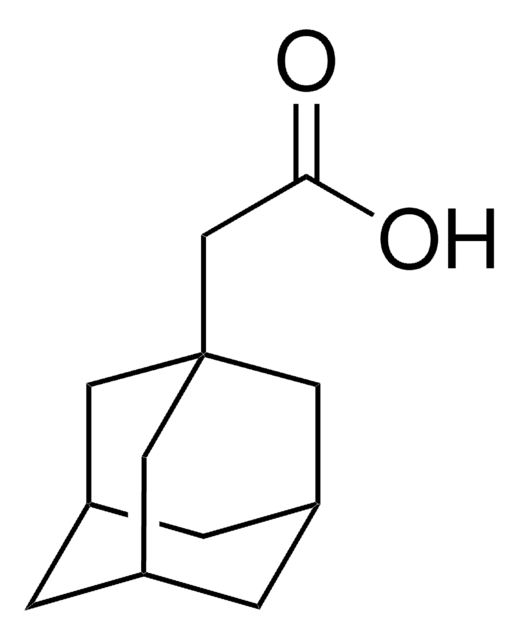180378
1-Adamantanemethylamine
98%
Sinónimos:
1-(Aminomethyl)adamantane
About This Item
Productos recomendados
Quality Level
assay
98%
form
liquid
refractive index
n20/D 1.5137 (lit.)
bp
83-85 °C/0.3 mmHg (lit.)
density
0.933 g/mL at 25 °C (lit.)
functional group
amine
SMILES string
NCC12C[C@H]3C[C@H](C[C@H](C3)C1)C2
InChI
1S/C11H19N/c12-7-11-4-8-1-9(5-11)3-10(2-8)6-11/h8-10H,1-7,12H2/t8-,9+,10-,11-
InChI key
XSOHXMFFSKTSIT-BIBSGERRSA-N
Gene Information
human ... GRIN2A(2903)
Categorías relacionadas
General description
signalword
Danger
hcodes
Hazard Classifications
Eye Dam. 1 - Skin Corr. 1B
Storage Class
8A - Combustible corrosive hazardous materials
wgk_germany
WGK 3
flash_point_f
197.6 °F - closed cup
flash_point_c
92 °C - closed cup
Elija entre una de las versiones más recientes:
¿Ya tiene este producto?
Encuentre la documentación para los productos que ha comprado recientemente en la Biblioteca de documentos.
Los clientes también vieron
Nuestro equipo de científicos tiene experiencia en todas las áreas de investigación: Ciencias de la vida, Ciencia de los materiales, Síntesis química, Cromatografía, Analítica y muchas otras.
Póngase en contacto con el Servicio técnico